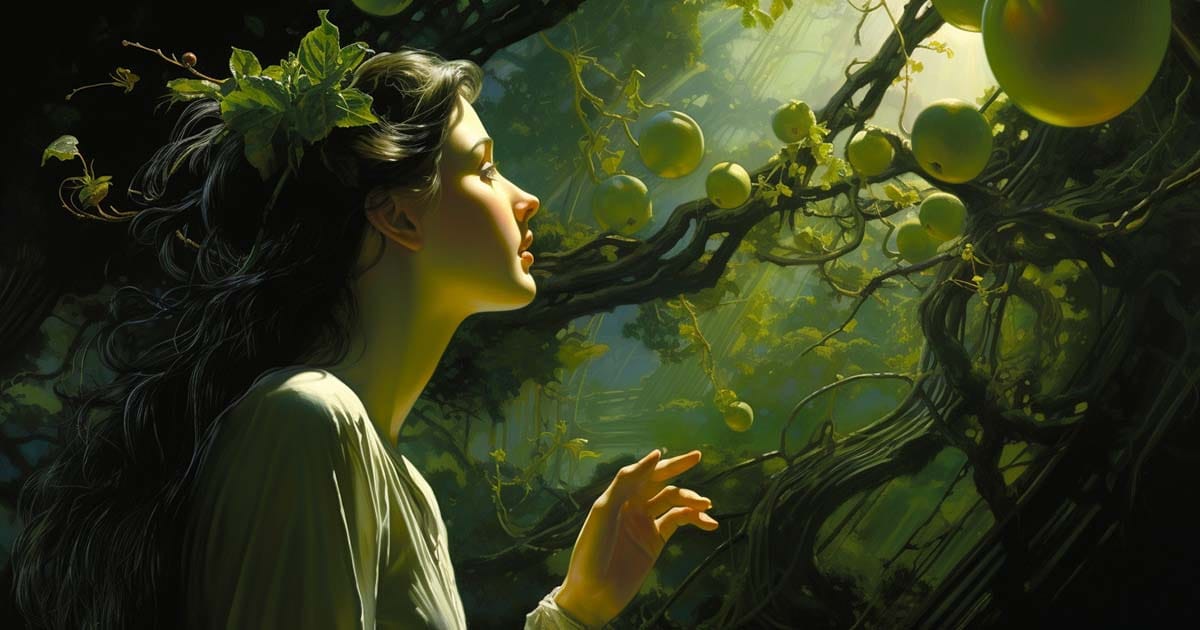Perelandra by C.S. Lewis: A Deep Dive into Theological Sci-Fi and Planetary Romance
"Perelandra" analysis: A dive into C.S. Lewis's theological sci-fi, exploring its characters, cultural implications, and potential audience appeal.

"Perelandra" is the second installment in C.S. Lewis's celebrated Space Trilogy, following "Out of the Silent Planet" and preceding "That Hideous Strength."
While Lewis is best known for his Chronicles of Narnia series, his foray into science fiction showcases his ability to weave profound theological and philosophical themes into a compelling and thought-provoking narrative.
Set primarily on the planet Venus, referred to as Perelandra in the novel, the story follows Dr. Elwin Ransom, a philologist and the protagonist from the first book.
| Title | Perelandra |
|---|---|
| Author | C.S. Lewis |
| Original Publication Date | 1943 |
| Sub-genres of Science Fiction | Soft SF, First Contact, Theological SF |
| Amazon | Buy on Amazon |
| Barnes & Noble | Buy at Barnes & Noble |
| Powell's Books | Buy at Powell's Books |
The celestial beings known as eldila summon Ransom to travel to Perelandra. There, he encounters a world of floating islands, unique creatures, and a nascent humanoid race. The planet is an Edenic paradise, untouched by the fall of man, and its sole human inhabitants are a green-skinned Eve-like woman and her soon-to-appear counterpart.
However, paradise is under threat. Weston, the antagonist from "Out of the Silent Planet," arrives with a mission to corrupt the still-innocent world of Perelandra. Ransom realizes that he must prevent another "fall" like the one on Earth. The ensuing struggle between Ransom and Weston is not just physical but deeply spiritual and philosophical, touching on themes of temptation, free will, and the nature of evil.
C.S. Lewis masterfully blends the boundaries of science fiction and theological exploration in "Perelandra." The vivid and imaginative descriptions of the alien landscape testify to Lewis's prowess as a world-builder. The floating islands, the unique flora and fauna, and the mesmerizing beauty of Perelandra come alive in the reader's mind, making it a fantastical and eerily familiar setting.
But it's the deeper themes that set this novel apart. Lewis delves into the nature of temptation, the consequences of choices, and the eternal battle between good and evil. Through the interactions between Ransom and the Perelandrian woman, Lewis explores the idea of innocence and the weight of decisions made in such a state.
Weston's role as the tempter is both chilling and profound. His arguments, while twisted, force readers to confront their own understanding of morality, divinity, and the human condition. Ransom's internal and external battles with Weston reflect humanity's larger struggle with sin and redemption.
"Perelandra" is more than just a science fiction novel; it's a deep theological meditation wrapped in a captivating story. C.S. Lewis challenges readers to think, reflect, and question while taking them on a journey to a world unlike any other. For fans of thought-provoking fiction and those who appreciate the blending of genre and philosophy, "Perelandra" is a must-read.
Characters
Dr. Elwin Ransom — A philologist by profession, Ransom is a courageous and morally upright individual. He is chosen by the celestial beings, the eldila, to travel to Perelandra and play a crucial role in its fate. Throughout the novel, Ransom grapples with profound philosophical and theological questions, and his character represents the embodiment of good in the battle against evil.
Weston (The Un-man) — Having been the antagonist in "Out of the Silent Planet," Weston returns in "Perelandra" with a more sinister role. He becomes possessed by a malevolent force, often referred to as the "Un-man" due to his loss of humanity. Weston's mission is to corrupt the innocent world of Perelandra. He is cunning, he is persuasive, and he represents the embodiment of evil and temptation.
The Green Lady (The Queen of Perelandra) — Resembling a human but with green skin, the Green Lady is the Eve-like figure of Perelandra. She is innocent, curious, and in the process of understanding her world and her role in it. Her interactions with Ransom and Weston are central to the novel's themes of temptation and free will.
The King (The Adam of Perelandra) — Introduced later in the story, the King is the male counterpart to the Green Lady. He embodies the untainted masculine principle of the Perelandrian world and plays a crucial role in the planet's destiny.
The Eldila — These are spiritual entities that exist in the heavens and have a role in the governance of the universe. In the novel, they communicate with Ransom and guide him on his mission to Perelandra.
Maleldil — Not a character in the traditional sense, Maleldil is the God figure in Lewis's universe. He is the ultimate source of goodness and righteousness, and His will is central to the unfolding events in the novel.
Cultural Implications
"Perelandra," while primarily a work of science fiction, delves deep into theological, philosophical, and moral territories, reflecting and challenging the cultural milieu of its time. The novel's implications can be dissected through various lenses.
Theological Exploration. At its core, "Perelandra" reimagines the biblical story of the Fall of Man. By setting this narrative on another planet, Lewis invites readers to reconsider the story of Adam and Eve, not as a historical account, but as a universal tale of temptation, free will, and the nature of evil. This reframing prompts readers to reflect on the essence of original sin and redemption, central tenets of Christian theology.
Environmental Stewardship. Perelandra's pristine and harmonious world is in stark contrast to the post-industrial landscapes of Earth. Lewis's depiction of an unspoiled paradise underscores the importance of environmental preservation and the potential consequences of unchecked human intervention. In a time when environmental concerns were not as mainstream as they are today, "Perelandra" subtly advocates for a harmonious coexistence with nature.
Sexual Dynamics. The interactions between Ransom, Weston, and the Green Lady offer a commentary on the roles and relations of men and women. The Green Lady's innocence and her process of self-discovery in the face of external influences can be seen as a reflection of the evolving role of women in society, particularly in the mid-20th century. The novel raises questions about autonomy, agency, and the societal expectations placed upon women. And it is still in keeping with a proper view of the sexes.
Colonialism and Imperialism. Weston's attempt to impose his will on Perelandra and corrupt its inhabitants can be interpreted as a critique of colonialism and imperialism. His sense of superiority and mission to "civilize" the planet mirrors the justifications often given for colonial endeavors on Earth. Through this narrative, Lewis critiques the arrogance and destructiveness of such endeavors.
The Nature of Evil. Weston's transformation into the "Un-man" serves as a meditation on the nature of evil. Is evil an external force that possesses individuals, or is it an inherent part of human nature? Lewis's portrayal of evil as both internal and external challenges readers to reflect on their own moral compass and the societal influences that shape it. We are reminded that, at their core, humans are evil.
Science and Faith. By blending science fiction with deep theological themes, "Perelandra" bridges the often-perceived gap between science and faith. Lewis suggests that the wonders of the universe, even those beyond our planet, can coexist with a belief in a higher power. This harmonization was particularly relevant in a time when rapid scientific advancements sometimes seemed at odds with religious beliefs.
Who Might Enjoy "Perelandra"
"Perelandra" is a multifaceted work that appeals to a wide range of readers. Whether you're drawn to its theological insights, its sci-fi elements, or its philosophical depth, there's something in it for everyone. Here are some examples.
Theological Thinkers. Those interested in religious and theological themes will find "Perelandra" a rich tapestry of ideas. Lewis's exploration of temptation, free will, and the nature of evil, set against the backdrop of an alien Eden, offers a fresh perspective on age-old biblical narratives.
Science Fiction Enthusiasts. Fans of speculative fiction and otherworldly adventures will be captivated by Perelandra's vivid landscapes and unique creatures. Lewis's imaginative world-building and the interplanetary setting make it a must-read for sci-fi aficionados.
Philosophers and Ethicists. The novel delves deep into moral dilemmas, the nature of humanity, and the essence of good and evil. Readers who enjoy pondering philosophical questions and ethical conundrums will find plenty to mull over.
Environmentalists. The portrayal of Perelandra as an untouched paradise serves as a commentary on the importance of environmental stewardship. Those passionate about nature and environmental conservation will appreciate the novel's underlying message.
Fans of C.S. Lewis. Readers who have enjoyed Lewis's other works, whether it's the Chronicles of Narnia or his theological writings, will appreciate the blend of narrative storytelling and deep reflection present in "Perelandra."
Lovers of Classic Literature. As a mid-20th-century work that has stood the test of time, "Perelandra" offers a blend of timeless themes and a reflection of the cultural and societal issues of its era. Those who appreciate classic literature and the insights it provides into the human condition will find the novel a rewarding read.
Individuals Exploring Faith and Science. For those at the crossroads of faith and science, "Perelandra" offers a harmonious blend of both, suggesting that wonder at the universe and belief in a higher power are not mutually exclusive.

